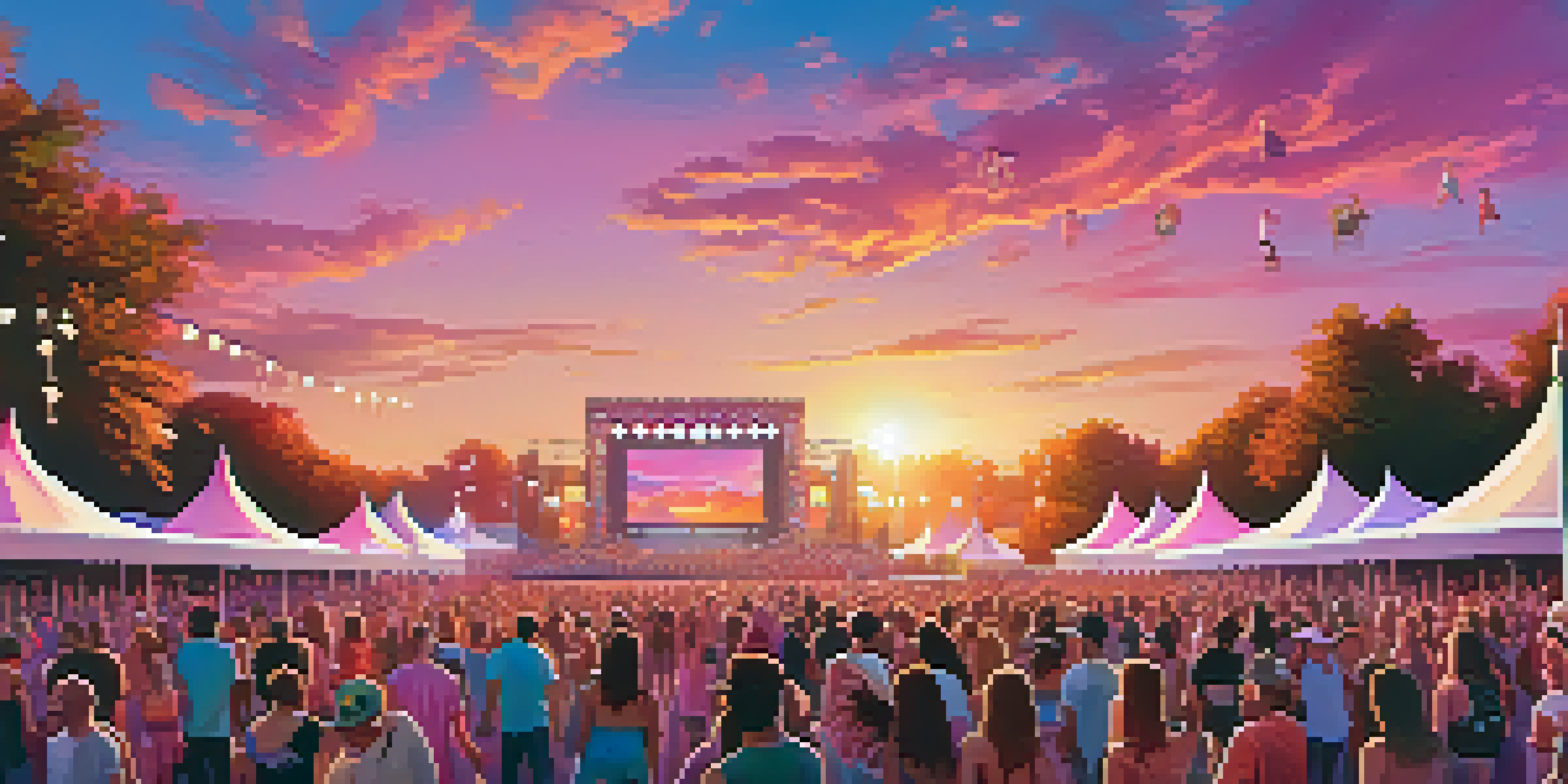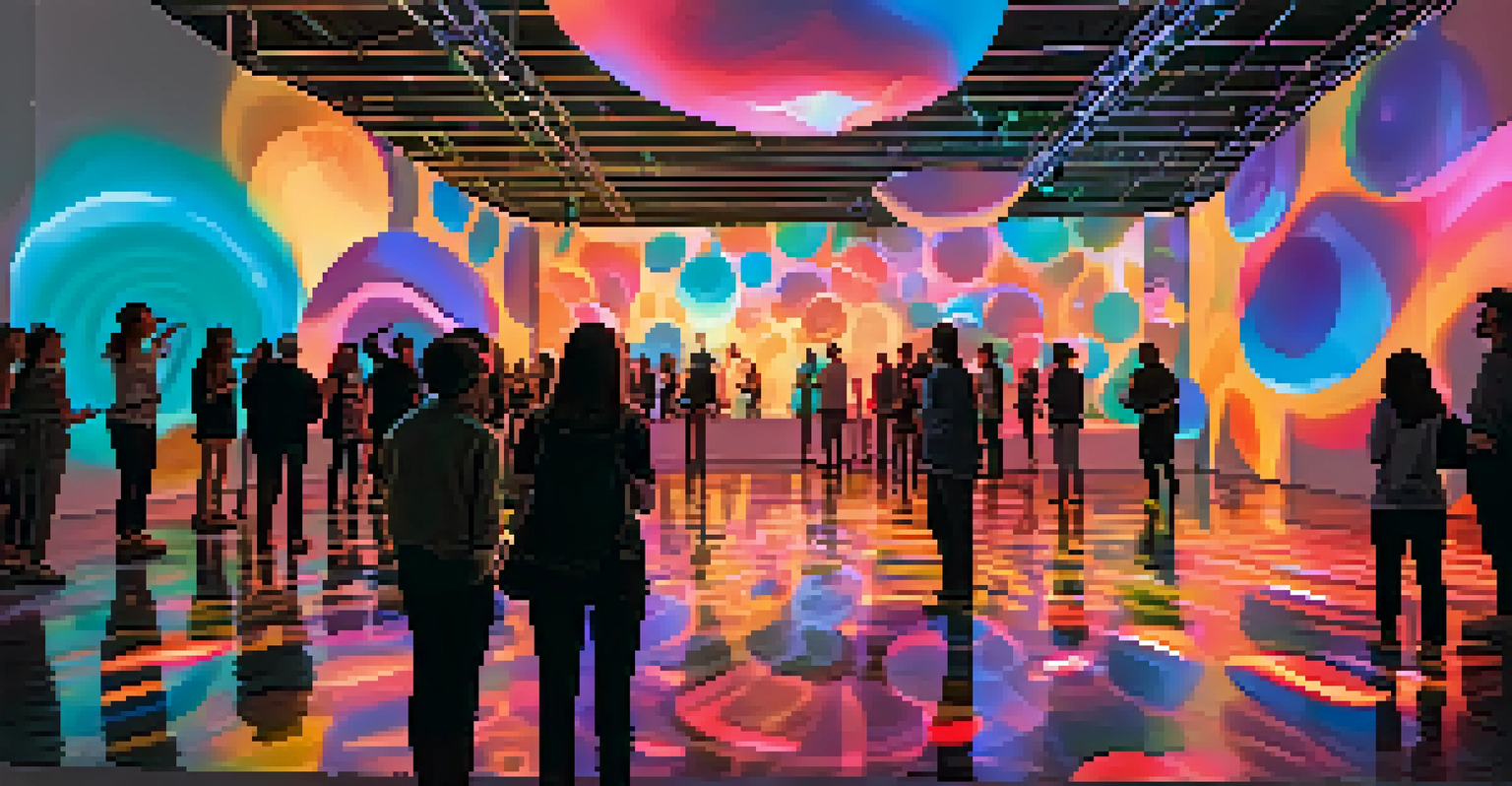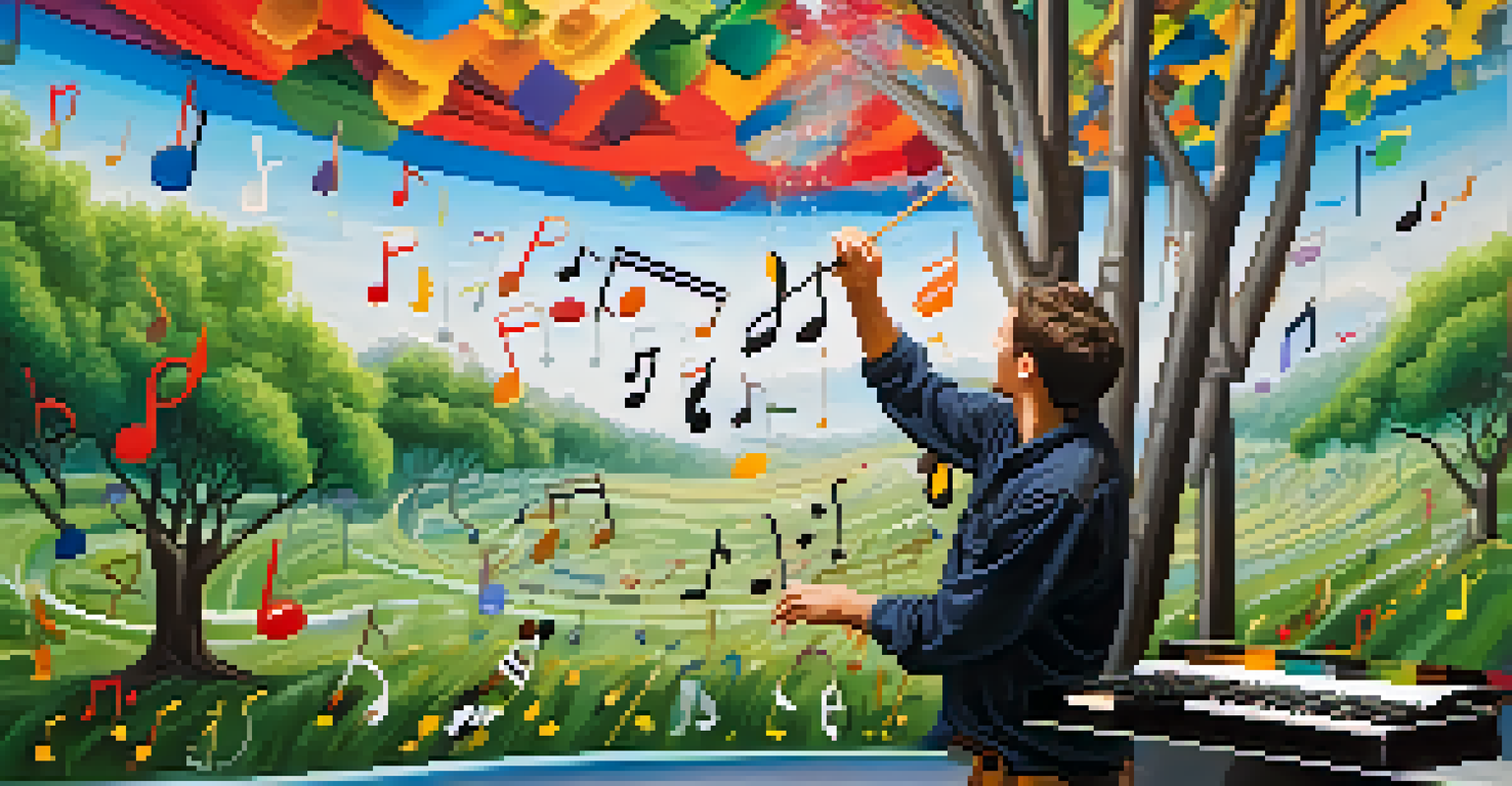Exploring the Intersection of Art and Music Events

Understanding the Relationship Between Art and Music
Art and music have shared a dynamic relationship for centuries, often enhancing each other’s impact. Think of a painting that evokes a certain emotion; now imagine how a piece of music can amplify that feeling. They both serve as forms of expression that resonate with audiences on multiple levels, creating a richer experience when combined.
Art and music are the universal languages of mankind.
This synergy is evident in various art movements, where music often inspired visual artists to create compelling works. For instance, the Impressionist painters like Monet were influenced by the sounds of nature, which can be likened to the soft melodies of a piano. When we appreciate these connections, we start to see how one medium can inform and elevate the other, making events that feature both truly special.
Moreover, collaborative projects that merge art and music not only captivate the senses but also foster creativity. This intersection invites artists and musicians to push boundaries, encouraging innovation that leads to unique experiences for audiences. In this ever-evolving dialogue, both art forms continuously learn from one another.
The Role of Live Events in Art and Music Fusion
Live events serve as a powerful platform for showcasing the synergy between art and music. Festivals, gallery openings, and concerts often incorporate visual elements that complement the musical performances, creating a holistic experience. For example, a live painting session during a concert can captivate attendees, making them feel as if they are part of a larger artistic collaboration.

These events also encourage audience interaction, inviting guests to engage with both the visual and auditory aspects of the experience. Imagine wandering through an art exhibit while listening to a live band; the atmosphere becomes electric as each element enhances the other. This interaction not only enriches the event but also leaves a lasting impression on attendees.
Art and Music Enhance Each Other
The dynamic relationship between art and music creates a richer experience by amplifying emotions and fostering creativity.
Furthermore, the growing trend of immersive art installations, like those by TeamLab, highlights how live events can create a memorable fusion of art and music. Visitors are often transported into a different world, where sound and sight dance together, showcasing the limitless possibilities when these two forms unite.
Exploring Different Genres and Their Collaborations
The intersection of art and music spans various genres, each offering unique collaborations. From classical composers collaborating with visual artists to modern electronic musicians integrating graphic art into their performances, the possibilities are endless. For instance, the collaboration between renowned artists and DJs at music festivals creates an all-encompassing experience that appeals to diverse audiences.
Where words fail, music speaks.
Genres like hip-hop and pop often feature vibrant visuals in their music videos, turning them into mini art pieces. This practice not only enhances the storytelling aspect but also broadens the reach of both the music and the visual art. As audiences consume these multi-layered experiences, they develop a deeper appreciation for both forms of expression.
Additionally, cross-genre projects, such as orchestral renditions of popular songs, showcase the versatility of music while inviting visual interpretations. This blending not only captivates fans but also introduces new audiences to different art forms, fostering a greater understanding and appreciation of both music and visual arts.
The Impact of Technology on Art and Music Events
Technology has played a pivotal role in shaping the intersection of art and music, particularly in live events. With advancements like projection mapping and interactive installations, artists can create immersive environments that engage the audience's senses. Imagine being enveloped in a stunning visual display that reacts to the music being played; it’s an experience that leaves a lasting impression.
Digital platforms also provide opportunities for artists and musicians to collaborate in innovative ways. Streaming services and social media allow them to share their work with global audiences, transcending geographical boundaries. This accessibility has led to a new wave of creativity, where artists can easily connect and collaborate with one another, regardless of location.
Live Events Showcase Creative Fusion
Festivals and concerts serve as powerful platforms that merge visual and auditory elements, enhancing audience engagement.
Moreover, virtual events and augmented reality experiences have transformed how we experience art and music. As we adapt to these new formats, the fusion of both art forms becomes more dynamic, inviting audiences to engage in ways that were previously unimaginable. The future of art and music events is bright as technology continues to pave new paths for creativity.
Cultural Significance of Art and Music Collaborations
Art and music collaborations often reflect the cultural zeitgeist, capturing the spirit of the times. These projects can address social issues, celebrate cultural heritage, or simply evoke emotion, making them powerful tools for communication. For example, movements like the Harlem Renaissance saw artists and musicians unite to express their experiences, creating a lasting impact on society.
In many cultures, art and music are intertwined traditions that celebrate communal identity. Festivals often feature local artists and musicians, allowing them to showcase their heritage while fostering a sense of belonging. Through these collaborations, communities can come together to celebrate their unique narratives and histories, strengthening cultural ties.
Furthermore, exploring the cultural significance of these collaborations fosters understanding and appreciation among diverse groups. By sharing stories through art and music, we create a dialogue that transcends language and cultural barriers. This mutual exchange enriches our collective experiences and nurtures empathy within society.
Prominent Examples of Art and Music Events
There are numerous events around the world that beautifully exemplify the intersection of art and music. The Coachella Valley Music and Arts Festival, for instance, not only showcases popular musicians but also features impressive art installations throughout the venue. Attendees can enjoy live performances while immersing themselves in the captivating visuals that surround them.
Another noteworthy example is the annual Burning Man festival, where art installations and musical performances coexist in a unique desert setting. This event encourages creativity and self-expression, allowing participants to explore the relationship between art and music in an immersive environment. The collaborative spirit at Burning Man fosters connections among attendees, inspiring them to push boundaries.
Future Trends Emphasize Inclusivity
As art and music collaborations evolve, there will be a greater focus on sustainability and inclusivity, enriching our cultural narratives.
These events are not just about entertainment; they also foster a sense of community and creativity. They create spaces where artists and musicians can collaborate, share ideas, and inspire each other, resulting in unforgettable experiences for attendees. As we continue to explore the intersection of art and music, these prominent examples remind us of the beauty that emerges when creativity knows no bounds.
Future Trends in Art and Music Collaborations
As we look to the future, the collaboration between art and music is poised to evolve in exciting ways. With the rise of artificial intelligence and machine learning, we may see new forms of artistic expression emerge, blending technology with traditional art and music. Imagine a world where AI generates real-time visual art that reacts to live music, creating an entirely new experience for audiences.
Sustainability is also becoming a significant focus in the art and music spheres. Events are increasingly prioritizing eco-friendly practices, and collaborations that emphasize environmental awareness are on the rise. Artists and musicians are using their platforms to address climate issues, encouraging audiences to engage in meaningful conversations about the future of our planet.

Additionally, inclusivity will continue to play a crucial role in shaping art and music collaborations. As more diverse voices are included in these creative spaces, we can expect to see a richer tapestry of experiences and stories. The future of art and music will not only be about merging mediums but also about celebrating the diverse narratives that contribute to our collective culture.